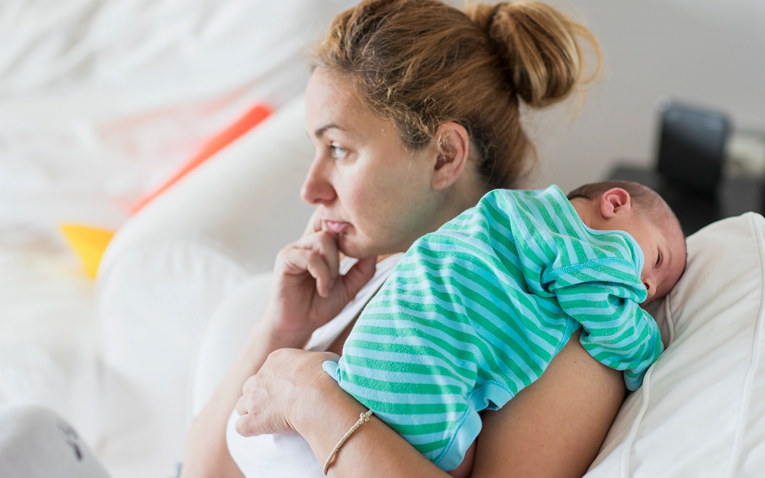Uterine Cancer: What Women Need to Know
Date
February 2, 2023

Date
February 2, 2023
Credits
Medical providers featured in this article
In Brief
{{cta-block}}
Uterine cancer is the most common gynecological cancer, affecting more than 800,000 women in the U.S., according to the National Cancer Institute (NCI).
These tumors develop inside the body of the uterus, often in the lining (endometrium) but also in the muscle or connective tissue. And because there is no preventive screening, they can be overlooked.
Unlike better-known conditions such as breast and lung cancers, prevalence and fatality rates for uterine cancer have steadily risen for more than a decade. The American Cancer Society (ACS) predicts around 66,200 new cases in 2023—and more than 13,000 deaths.
"The good news for endometrial cancers is patients often have symptoms that can prompt early diagnosis—if they’re aware of the signs and let their providers know."
Still, women can stay ahead of uterine cancer by being vigilant with their reproductive systems and understanding risks, says Dr. Margaret Liang, a Cedars-Sinai gynecologic oncologist.
"The good news for endometrial cancers is patients often have symptoms that can prompt early diagnosis—if they’re aware of the signs and let their providers know," she says.
{{providers}}
Watch out for abnormal bleeding
The main warning sign is bleeding after the age of menopause, around 51 years old.
"Any bleeding after menopause is not normal and warrants medical evaluation," Dr. Liang stresses.
Uterine cancer also often causes unusual vaginal bleeding in younger women, such as spotting between periods or a heavier, longer menstrual flow.
Other signs include pelvic pain and changes to bowel and bladder habits (such as urinary frequency and urgency) that don’t go away.
Endometrial cancers can mimic reproductive health disorders such as uterine fibroids
"It can be very confusing, because the symptoms overlap," Dr. Liang points out.
Many women have fibroids, non-cancerous uterine tumors, which can trigger heavy menstrual bleeding similar to uterine cancer.
Ovarian cysts, polycystic ovary syndrome and endometriosis also can cause menstrual irregularities.
Advocate for yourself if you’re worried your doctors aren’t taking your concerns seriously, she advises. Don’t be afraid to ask for a second opinion.
And be aware that healthy Pap test results don’t give you the all-clear, despite what most people assume, Dr. Liang emphasizes: The standard gynecological preventive screening only checks for cancer in your cervix, not the whole uterus or reproductive system.
Manage your risks
Your doctor will consider personal risk factors, including:
- Older age, with endometrial tumors usually growing in a person’s 50s and early 60s
- Obesity
- Hormone levels
- Genetic conditions such as Lynch syndrome
- Family history
Experts believe America’s climbing obesity rates are behind the cancer surge.
Endometrial cancer is two to three times more common in overweight and obese women. That’s because fat cells generate estrogen, which at higher levels can trigger cancer growth, Dr. Liang explains. Diabetes is linked as well.
Regular exercise can keep your weight down and help reverse those risks, the ACS recommends.
Similarly, hormone replacement therapy (often taken during menopause to manage symptoms such as hot flashes) can raise estrogen levels and leave women more vulnerable to the cancer. To combat those odds, doctors often prescribe a combination progestin and recommend using the lowest dose for the shortest amount of time.
Further, a patient with a strong family history of endometrial cancer, colon cancer or ovarian cancer—or family members who were diagnosed young with these cancers—should consider genetic testing. Lynch syndrome disrupts the body’s ability to control cell growth and dramatically raises the chances of endometrial cancer to up to 70%.
Endometrial cancers are especially concerning in Black women, who are at higher risk of developing rare, aggressive subtypes and twice as likely to die from the disease—a rate which is only growing. The cancer is also more deadly in Latina women.
The reasons why are still unclear, but there is growing awareness and research into the disparities, Dr. Liang says. One possibility is that tumors are missed because fibroids are more common among Black patients.
Early diagnosis is vital
About 67.5% of uterine cancers are caught when still confined to the tumor, according to the NCI, a stage which almost all patients (up to 95%) survive.
That five-year survival rate plummets to just about 18% when cancer advances to other organs.
If you have symptoms such as abnormal bleeding, don’t assume it’s harmless—especially if they’re not improving with other treatments, such as birth control, or the symptoms suddenly change, Dr. Liang cautions. See a gynecologist right away for specialized care.
They will run a pelvic ultrasound to look inside your uterus, uterine lining, cervix, fallopian tubes and ovaries, noting fibroids or other obvious explanations.
If nothing is found, the gold standard of detection is an endometrial biopsy, a simple office procedure extracting a uterine lining sample that your doctor can check for precancerous, cancerous and non-cancerous cells.
Some patients may require further examination in the operating room with a dilation and curettage biopsy removing uterine tissue.
Arm yourself with questions and support through treatment
Once diagnosed, most uterine and endometrial cancers are treated with a hysterectomy, removing the uterus and often the tubes and ovaries, as well as any affected lymph nodes.
Depending on how aggressive and widespread the cancer is, your gynecologic oncologist might also prescribe chemotherapy or radiation.
Come prepared with questions, cancer advocates encourage. Find out how you can get ready for treatment, manage side effects and any clinical trials you might be eligible for, as well as needed lifestyle changes and limitations.
A cancer survivor network might also help. With the right support, Dr. Liang says, you can thrive after an endometrial cancer diagnosis.






